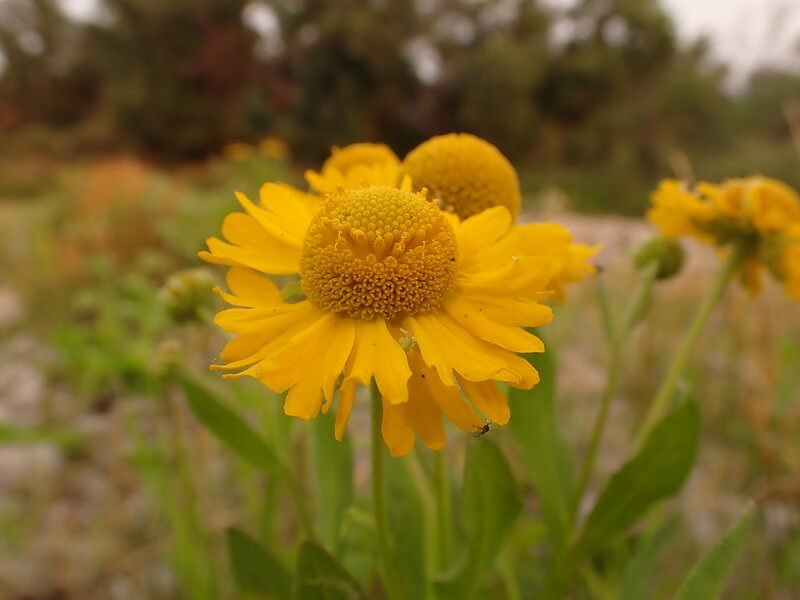 Image 1 of
Image 1 of


Sneezeweed (Helenium autumnale)
Sneezeweed attracts many different native bees and is the host to the specialist bees Svastra petulca, Melissodes microstictus, and Megachile parallela (Johnson and Colla, 2023). Butterflies also like to nectar on this plant and it is the host for 7 species of butterflies and moths in our area (nwf.org). It is a great plant to have because it offers resources in late summer when many other blossoms have disappeared. Deer tend to avoid this plant because the foliage is toxic and bitter. It may be toxic to livestock as well, so keep that in mind (illinoiswildflower.info).
Photo credit: Matt Levin
Sneezeweed attracts many different native bees and is the host to the specialist bees Svastra petulca, Melissodes microstictus, and Megachile parallela (Johnson and Colla, 2023). Butterflies also like to nectar on this plant and it is the host for 7 species of butterflies and moths in our area (nwf.org). It is a great plant to have because it offers resources in late summer when many other blossoms have disappeared. Deer tend to avoid this plant because the foliage is toxic and bitter. It may be toxic to livestock as well, so keep that in mind (illinoiswildflower.info).
Photo credit: Matt Levin
Sneezeweed attracts many different native bees and is the host to the specialist bees Svastra petulca, Melissodes microstictus, and Megachile parallela (Johnson and Colla, 2023). Butterflies also like to nectar on this plant and it is the host for 7 species of butterflies and moths in our area (nwf.org). It is a great plant to have because it offers resources in late summer when many other blossoms have disappeared. Deer tend to avoid this plant because the foliage is toxic and bitter. It may be toxic to livestock as well, so keep that in mind (illinoiswildflower.info).
Photo credit: Matt Levin
Life Cycle: Perennial
Sun Exposure: Full, Partial
Soil Moisture: Wet, Medium-Wet
Height: 4 feet
Plant Spacing: 1.5-2 feet
Bloom Time: August-October
Bloom Color: Yellow
Advantages: Pollinator Favorite, Bird Favorite, Deer Resistant, Great Landscaping Plant
Host Plant: 7 species of butterflies and moths in our area (nwf.org)
Specialist Bee: Svastra petulca, Melissodes microstictus, and Megachile parallela (Johnson and Colla, 2023)
Resource: Johnson, Lorraine, and Sheila Colla. A Northern Gardener’s Guide to Native Plants and Pollinators: Creating Habitat in the Northeast, Great Lakes, and Upper Midwest. Island Press, 2023





